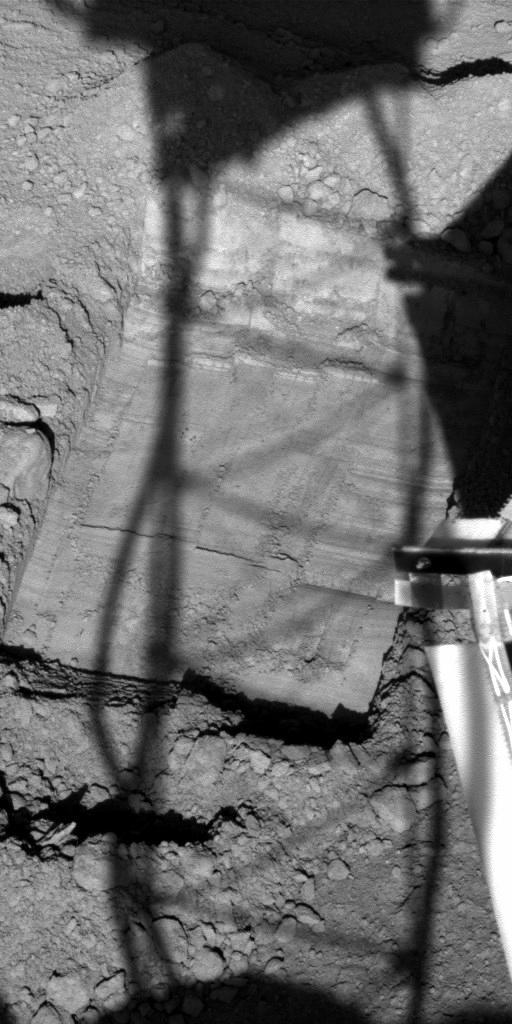NASA’s Phoenix Mars Lander is using its robotic arm to enlarge an exposure of hard subsurface material expected to yield a sample of ice-rich soil for analysis in one of the lander’s ovens.
The trench was about 8 by 12 inches (20 by 30 centimeters) after work by the arm on Saturday. The team sent commands today to extend the longer dimension by about 6 inches (15 centimeters).
Experiments with a near-duplicate of the lander in Tucson during the past week indicate that the bigger surface is needed to allow steps planned for collecting an ice sample from the martian trench informally named Snow White.
“Right now, there is not enough real estate of dark icy soil in the trench to do a sample acquisition test and later a full-up acquisition” for the thermal and evolved-gas analyzer, says Ray Arvidson, Phoenix’s “dig czar,” from Washington University in St. Louis. The arm’s rasp will kick the icy soil into the scoop through a special capture mechanism, and scientists also want to scoop up any loose material left in the trench from the rasping activity, Arvidson says.
Sample of shallower, non-icy soil from the Snow White trench have already been examined in Phoenix’s wet chemistry laboratory and optical microscope, and a fork-like probe has checked how well nearby soil conducts heat and electricity.
“The Phoenix science team is working diligently to analyze the results of the tests from these various instruments,” says Phoenix principal investigator Peter Smith. “The preliminary signatures we are seeing are intriguing. Before we release results, we want to verify that our interpretations are correct by conducting laboratory results.”
As the robotic arm was extracting the fork-like conductivity probe from the soil on Saturday, the arm contacted a rock called Alice, near the Snow White trenching area. The arm is programmed to stop activity when it encounters an obstacle. The team assessed the arm’s status on Sunday and decided to resume use of the arm on Monday. Today’s commands call for the robotic arm to move away from the rock, dump out soil that is in the scoop and extend the Snow White trench approximately 6 inches (15 centimeters) toward the lander.










